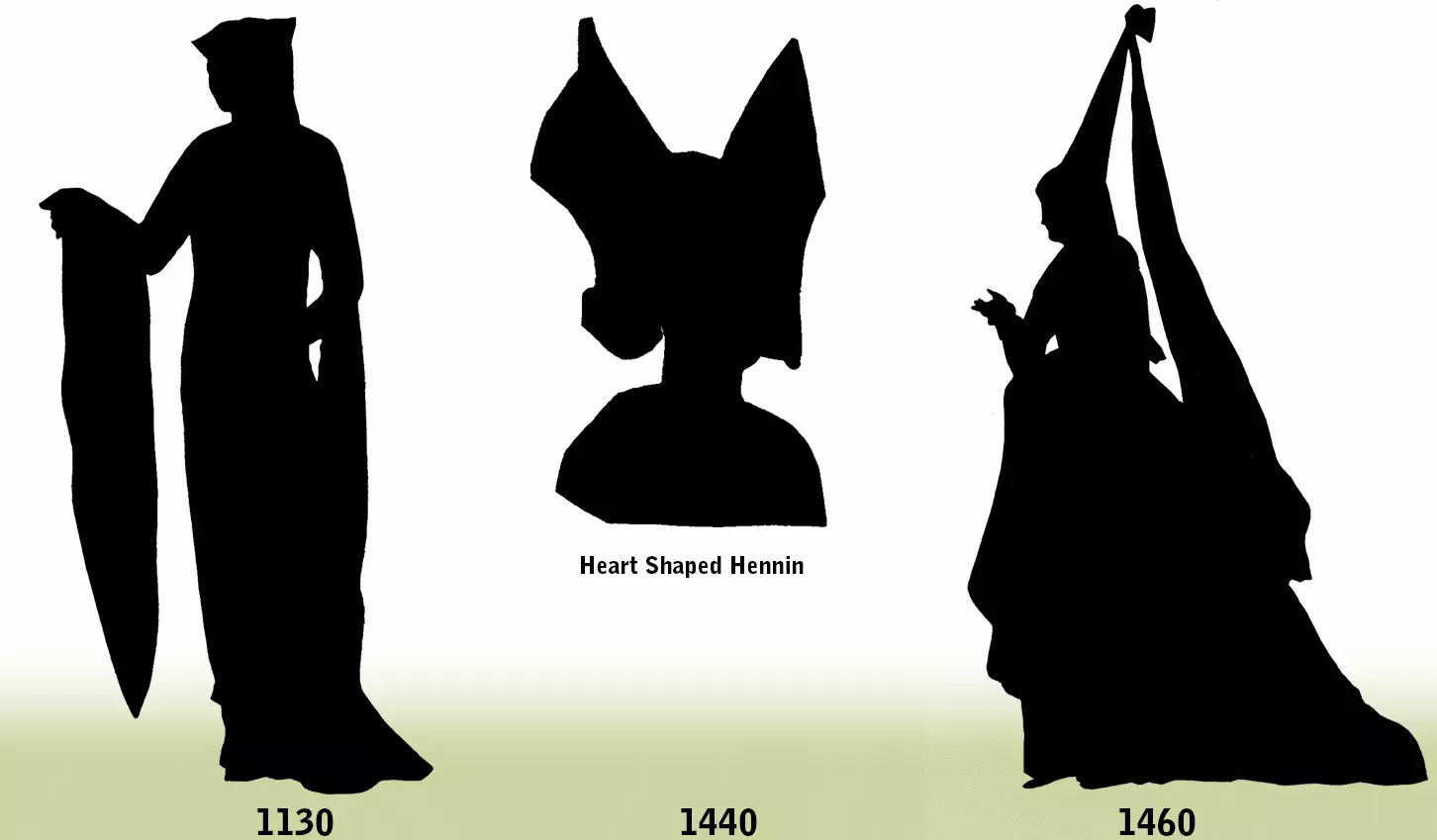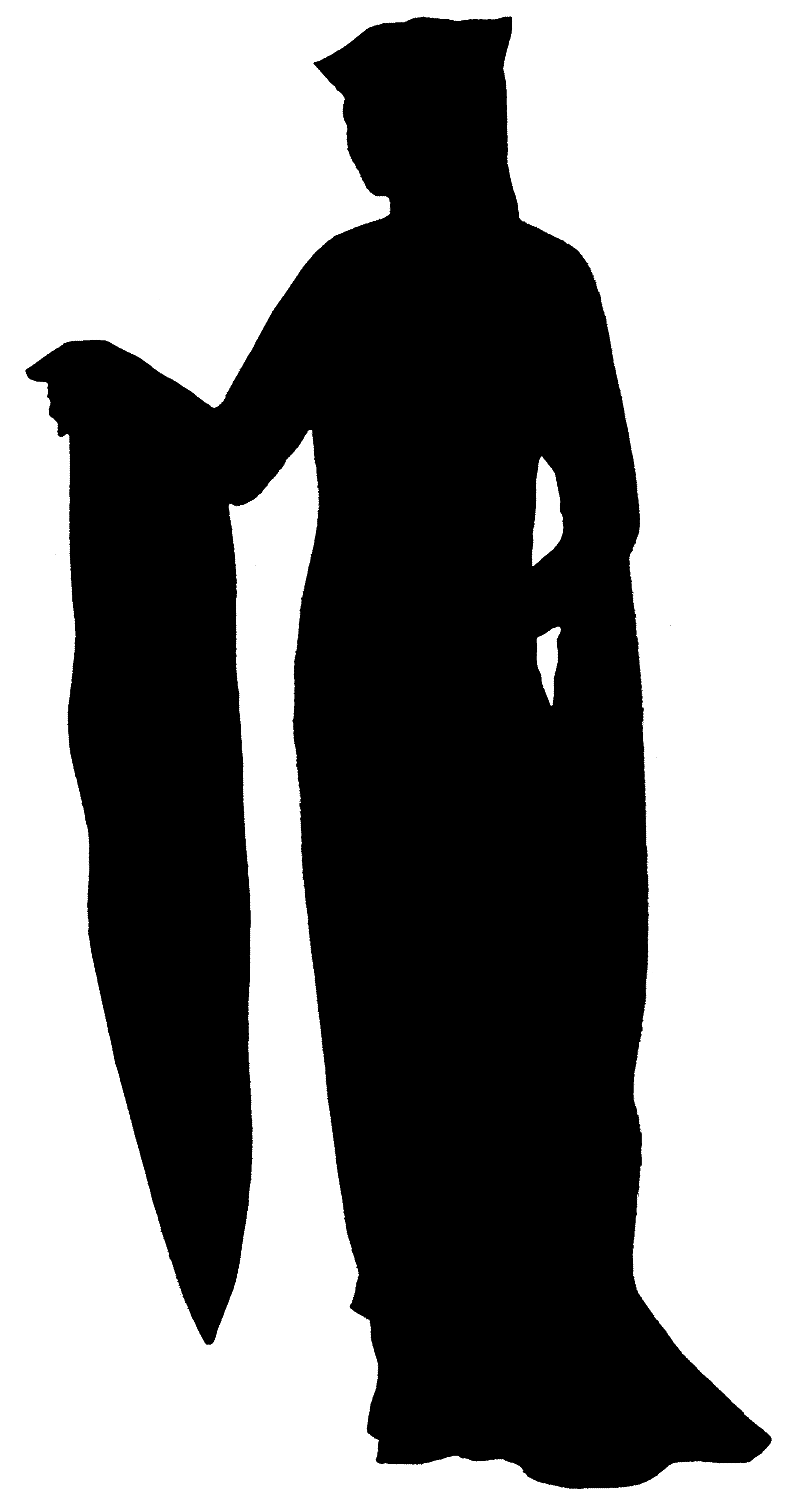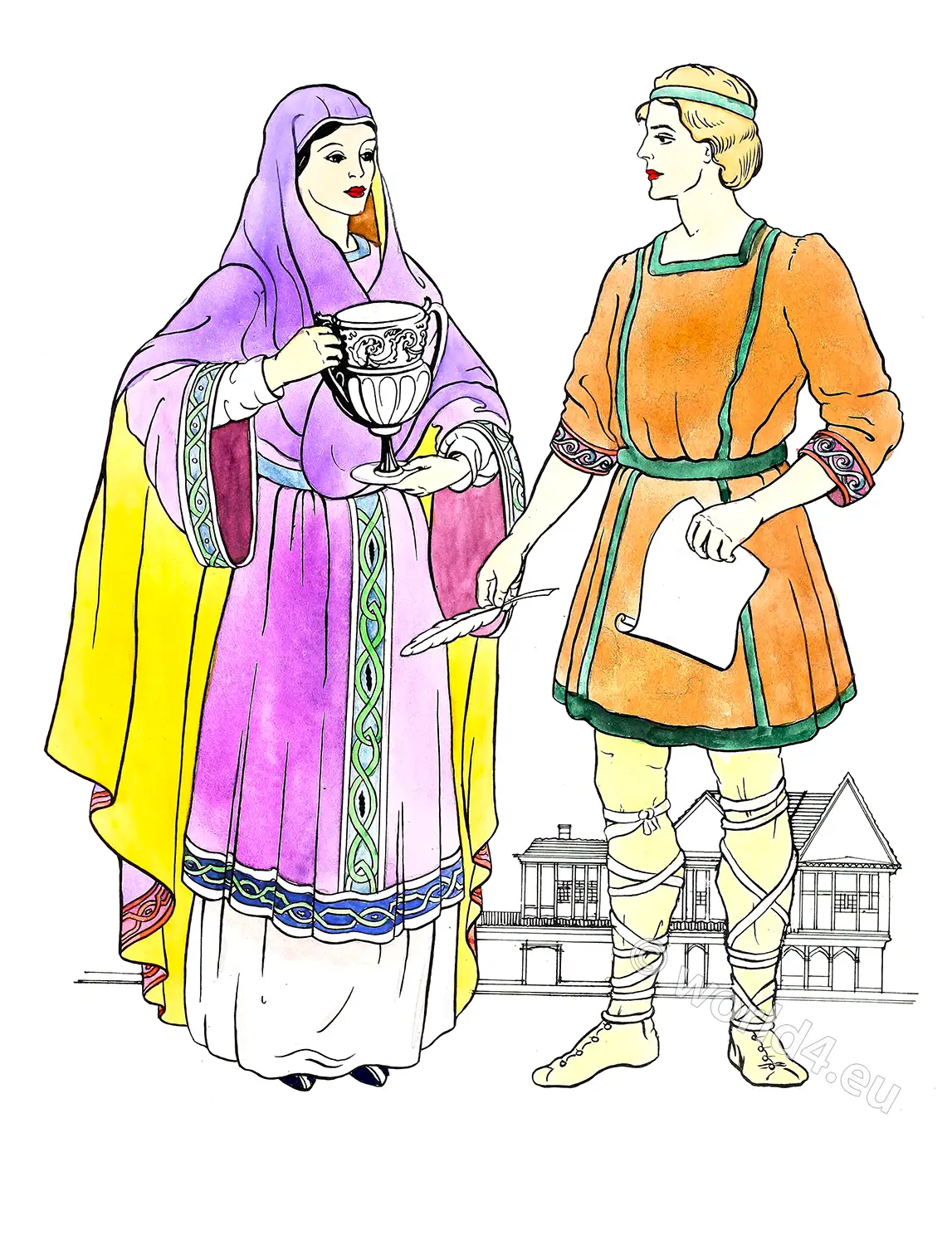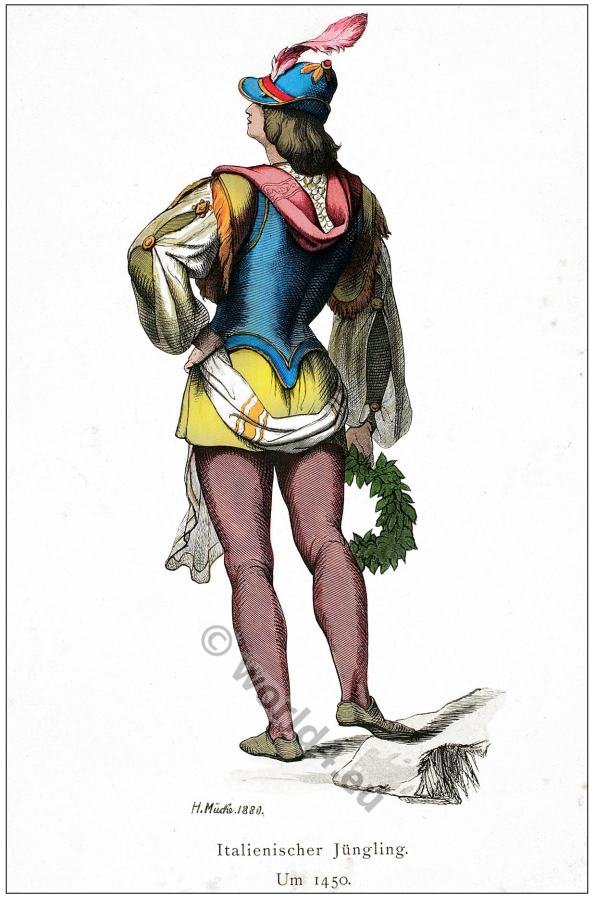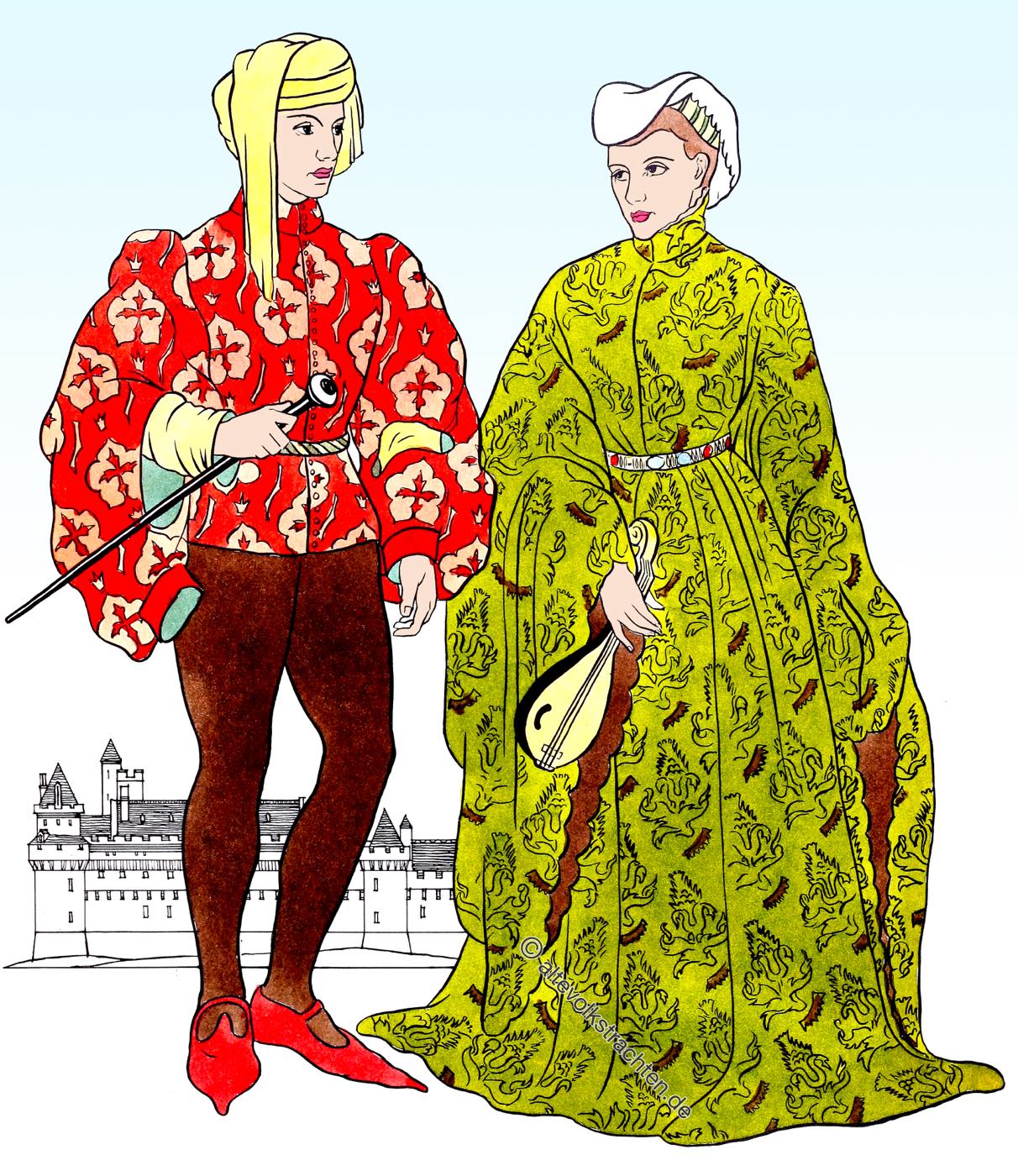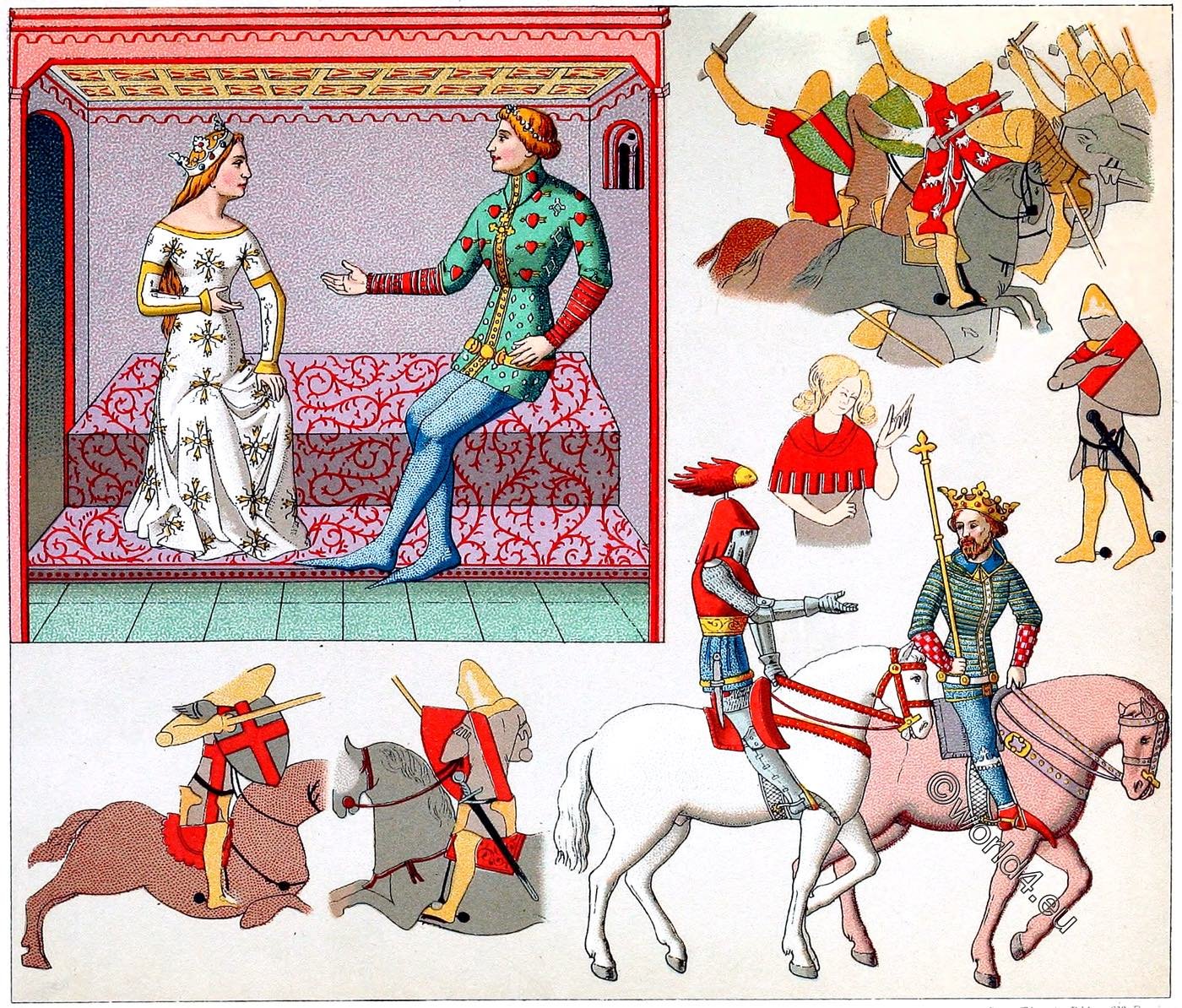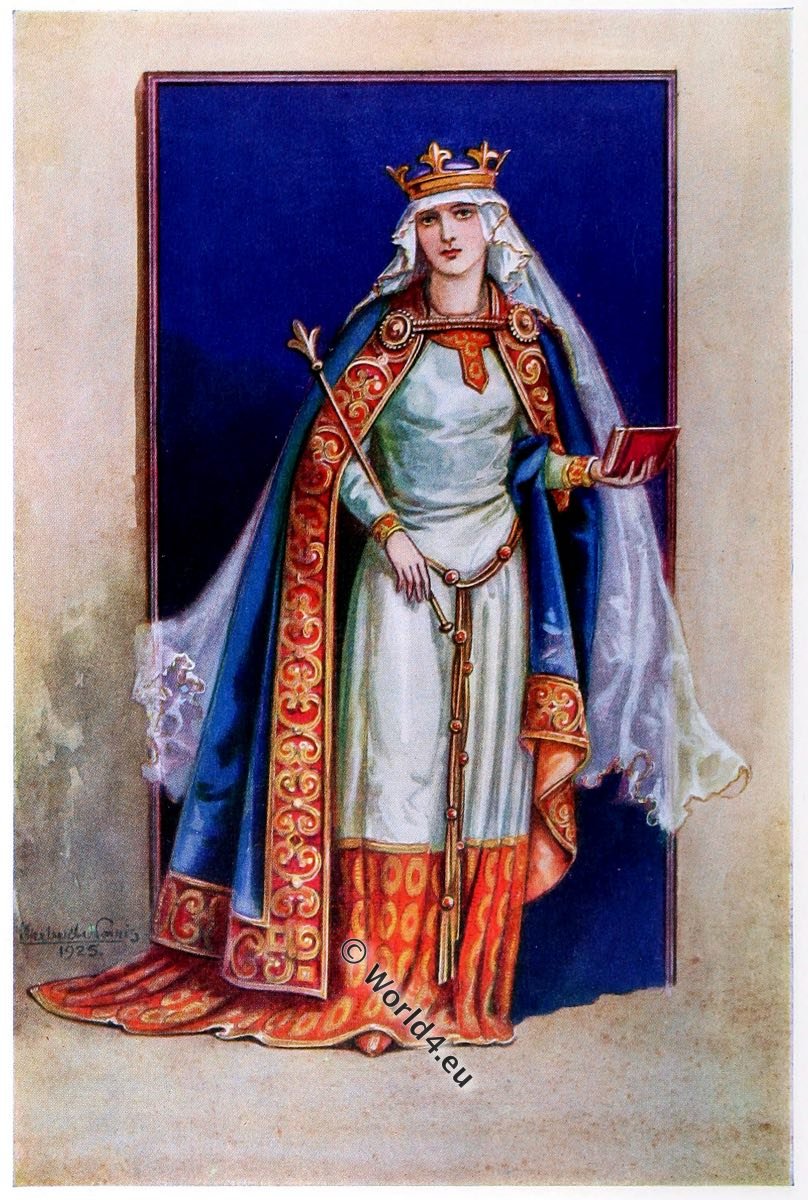FASHION SILHOUETTES OF THE MIDDLE AGES
As French costume is the basis of practically all of our modern dress, we must turn next to the simple tunics and wraps which clothed the early inhabitants of that country we now call France.
The ancestors of the French, the Gauls and the Franks, wore tunics and flowing mantles which gradually increased in length and fullness as the ideas brought by their warriors from Italy and later by the Crusaders from the East were adopted. In general the costume of the earlier centuries of the Middle Ages, which began with the fall of Rome in 476 and continued until 1500, hung loosely from the shoulders: it was sometimes held in slightly by a broad, ornamented girdle, and had long, flowing sleeves. Over this dress was worn a long, loose mantle, while the head was covered by a large, embroidered veil, the latter being the article of attire decidedly characteristic of the woman of the Franks.
By the twelfth century the dress of the women became more fitted, a pliable material being used for the upper part of the dress which was closely drawn to the form and laced in the back or under the arm.
The skirt fell in straight, fine folds to the ground; the sleeves were either bell-shaped, long and flowing, or long and close fitting. A small, circular veil surmounted by a circlet and showing the hair, which was worn in long braids or flowing, replaced the earlier large veil, and was in turn succeeded in many instances by the wimple, that linen head-dress which completely covered the hair, the sides of the face, and the chin, and which to-day is worn in a modified form by the nuns of some religious orders.
The new and characteristic garment of the thirteenth century, the surcot, made no radical change in the silhouette, but in the fourteenth and fifteenth centuries we find a decided tendency away from the long, straight dress hanging loosely from the shoulder to the more fitted costume of the succeeding four hundred years.
Characteristics of the art of the Moyen Age were frequently reflected in the costume of the time. In Gothic architecture the note of emphasis is found in the long and pointed arches; in the straight, clinging lines of the garments; the points of the shoes, and the tall head-dresses of the fourteenth and fifteenth centuries, this same idea of length and height was carried out.
This period from 1300 to 1500 was full of the eccentricities of extreme fashion, and in the silhouette of these years we see the very short, tight bodice with long flowing skirt; the pointed shoes which frequently reached the length of two feet; and the high, unwieldy head-dresses.
These Moyen Age head-dresses, or hennins, were cone-shaped, heart-shaped, round and pointed; they completely covered the hair, and were frequently one yard in height. Many of the cone-shaped hennins had attached to them enormous wire frames which were covered with stiffly starched gauze. We are told by historians that Isabelle, the wife of Charles VI of France, wore such extremely high head-dresses that the door-ways of her castle of Vincennes had to be raised in order to accommodate her.
The materials of which these costumes were made were cloth, velvet, rich damasks, and other handsome silks.
QUESTIONS
- Would the type of silhouette shown in Fig. 5 be practical for the modern woman? List your reasons in favour of or against this silhouette for present day use.
- Does the architecture of our homes have any restraining influence on our costume? If so, what?
- What points of similarity do you find in Gothic architecture and the costumes of the latter part of the Middle Ages?
- What are the sources of inspiration for the designing of the long, flowing sleeves, so generally worn in 1922.
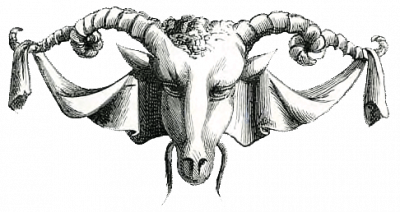
Source: Costume silhouettes by Mary Evans. Philadelphia, J.B. Lippincott Company 1923.
Continuing
Discover more from World4 Costume Culture History
Subscribe to get the latest posts sent to your email.

